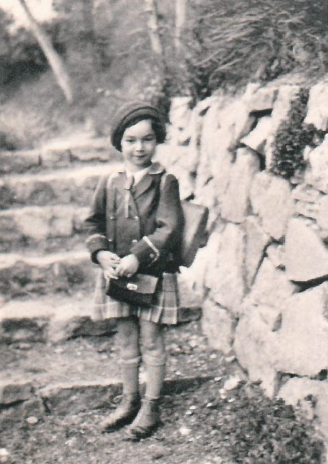Congregational Life

Hannah Herzberg as a schoolgirl, undated © Private property
Jewish congregations organize their religious activities independently. In Judaism, there are no higher institutions such as a Church issuing guidelines all congregations are required to follow. Every congregation chooses its rabbi. The rabbi is its highest authority in all religious, cultural, and educational matters. Dr. Moritz Salberger – who served as the rabbi here for nearly forty years – played a decisive role in shaping the life of the Erfurt congregation. The synagogue also had a cantor, a scribe, and a synagogue overseer in its employ. The overseer lived in an apartment on the third floor of the building.
Religion and Ritual
The congregation ensures that its members can live according to the rules of the Jewish faith. Boys are admitted to the Jewish faith when they are circumcised after birth. The circumcision symbolizes G-d’s covenant with the Jews. Boys reach religious maturity on their thirteenth birthday, girls on their twelfth. When they celebrate this event with a Bar or Bat Mitzvah, they become "sons" or "daughters of the commandment". Now they are responsible for observing the laws of Judaism on their own. The important rituals include the Jewish wedding, burial in a cemetery belonging to the congregation, and ritual purification in a bath called a mikvah. There was a mikvah in the cellar of the Erfurt Synagogue until 1903.
The Work of the Congregation
Jewish congregations organize their affairs and their relations to the outside by electing a body of voluntary representatives. The chairman of that body holds the greatest responsibility. The Erfurt Synagogue congregation had a religious committee that organized the worship services, conferred about the employment of the rabbi and the cantor, and controlled the slaughtering of animals according to Jewish law. The welfare committee came to the aid of needy members of the congregation and supported Jewish charity institutions. A school committee oversaw the instruction of the children in Hebrew and the Jewish religion by the cantor and the rabbi. The synagogue also had its own library.
In the mid-1930s, when Hanna Herzberg was eight years old, she went to synagogue on Shabbat with her grandparents Hedwig and Siegfried Pinthus and her sister Eva. Much later she recalled:
"As the congregation chairman, Grandpa had a place of honor in the first row. Eva and I sat with Grandpa; Grandma sat in the women’s section on the upper floor. Since we were seated in such an exposed position, we were expected to behave perfectly—we had to sit absolutely still and keep utterly quiet. It would have been impossible for us to join in the songs because the incomprehensible Hebrew texts would have made us break out in uncontrollable laughing and coughing. […] It got less boring and difficult to go to synagogue once I had learned a bit of Hebrew and was able to follow the texts. Many of the holidays were beautiful and we enjoyed the rituals, especially when we learned about their meaning in religion class."
Associations
In the nineteenth century, many members of the congregations took advantage of the social opportunities that came along with their equal legal status. They participated in society by becoming active in associations. When anti-Semitism began to rise again in the late nineteenth century, several initiatives formed within the congregation, for example the Association of the History and Literature of Judaism. The Erfurt chapter of the B’nai B’rith organization was founded in the early twentieth century. That group and the local chapter of the Central Association of German Citizens of the Jewish Faith championed tolerance, humanity, and the rights of Jewish citizens.